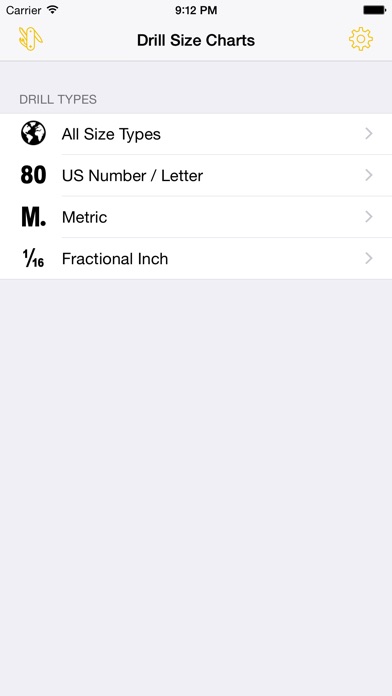
So in your calculations, you will do this: mm. I.e., M12x1.5 is a screw with 1.5 pitch and 12 mm diameter. Once you subtract, you have your drill sizes. The number following sign x is the pitch. Some screws have the letter M and a number representing the screw diameter. Take the screw or bolt size in millimeters and subtract its pitch value. You can convert drill bit sizes using elementary math.
Letter drill size chart how to#
Recommended Reading: Power Drill Vs Impact Driver How To Convert The Drill Bit Sizes Information required to select the drill bit includes thread count, diameter, thread pitch, and coarse/fine threads. Tapping is the action that creates a thread into the side of the hole.Ī variety of taps are available to match almost any screw type available, including metric and standard measurements. Drilling refers to creating a smooth hole in a material with a drill and motor. What Is The Difference Between Drilling And Tappingĭrilling and tapping are two different actions. Custom threads can be made with a thread cutter, but this may result in a additional charge. The thread cutter is limited to diameters greater than 1/2. Tapped holes can be made with a traditional tap which is a tool made for a standard thread size, or a thread cutter, which is a small disk that cuts threads through the XYZ movement of the CNC. Read Also: 60 Gallon Us General Air Compressor Can My Part Be Made With Custom Threads The approximate thread count is shown here based on the pitch for each thread count. The thread pitch is used by the metric system for measuring the distance between threads, which is measured in millimeters. Details about 8-32 tap drill, 10-32 tap drill, 6-32 tap drill, and 6-32 drill size are mentioned here. The tap size chart on this page is the list of standard size drill bits in different measurement systems that include fractional, metric, wire gauge number, and letter. The best way to produce the thread holes is to drill a hole of the right size with a drill bit & tap it with a tap. The decimal equivalent of the diameters here is shown in both the English and the Metric unit. The fractional sizes are listed in inches, while the metric sizes are listed in millimeters following the letter M. Customers will be able to buy the right kind of hardware by analyzing the tap drill size. Get to know 8-32 tap drill, 10-32 tap drill, and 6-32 tap drill size from the page. It is meant for fractional, metric, and screw sizes. The tap size chart is providing the list of standard size taps, with the diameter and thread spacing. With our Calculator and Chart, you can get the precise tap drill size as a function of the thread height. The actual working range in most cases is 65%-85%. Therefore, in most charts you will find in various catalogs or on the web, the value given for the tap drill size is 75% thread height. It is an informal rule that the default thread depth is 75%.However, the strength of the thread is reduced, and the minor diameter can get out of tolerance. Increasing the drill size makes tapping easier and extends the tool-life of the tap.The thread depth is a primary factor influencing a tapping toolâs torque and tool life. Since the feed always equals the thread pitch and the entire thread depth is machined in one pass by definition, these factors are not in our control.A smaller Thread height means a larger tap drill size.


The distance between the crest and root is called the thread height. When it comes to drill bit sizes, there at least 153, those are the ones I can recall right now, there could be more, hence the need for a drill size chart with thread information. While there are common threads like the American pipe thread, the unified thread there are many unfamiliar threads. The proliferation of fittings and connectors makes correct thread identification a difficult and exhausting task even for the most experienced technician or mechanical engineers theres always a new thread out there. A drill size chart contains drill sizes and thread data that is so large that is almost impossible for a mechanical engineer to remember it all. The best thing to do is find a tap drill clearance chart you can print, just like the one we offer in this article and print it for your lab so your team can easily access it.


 0 kommentar(er)
0 kommentar(er)
